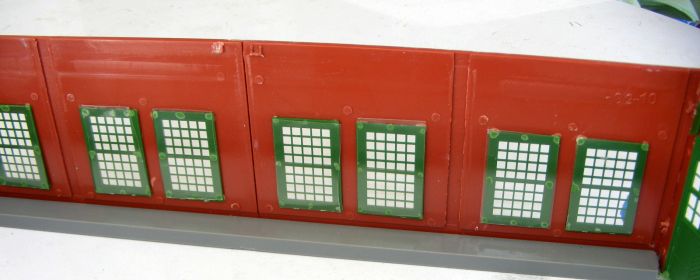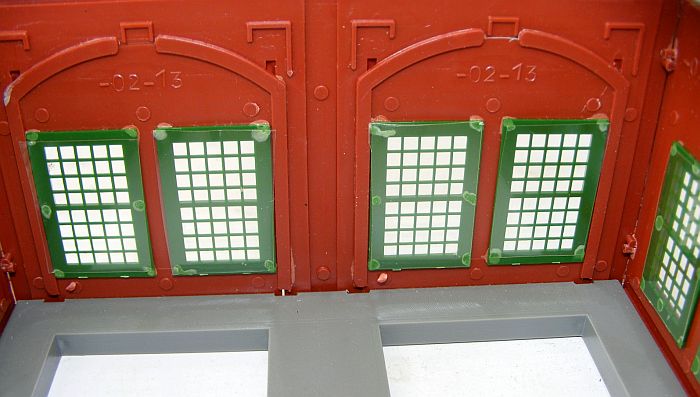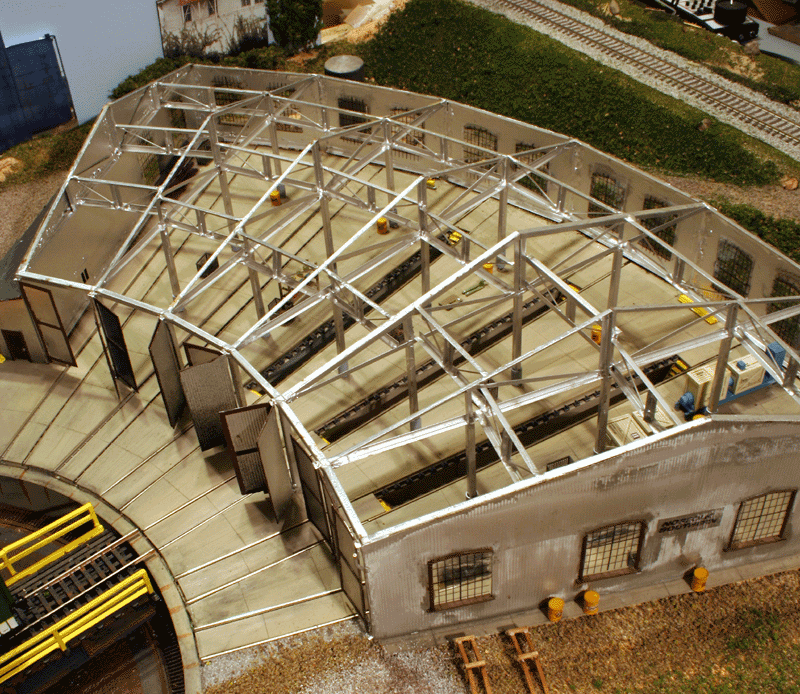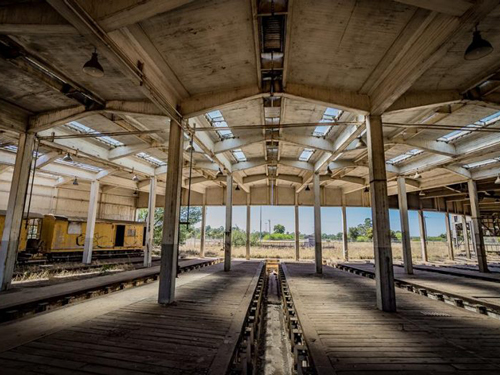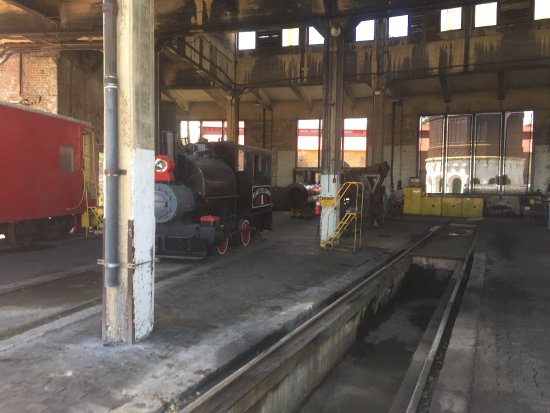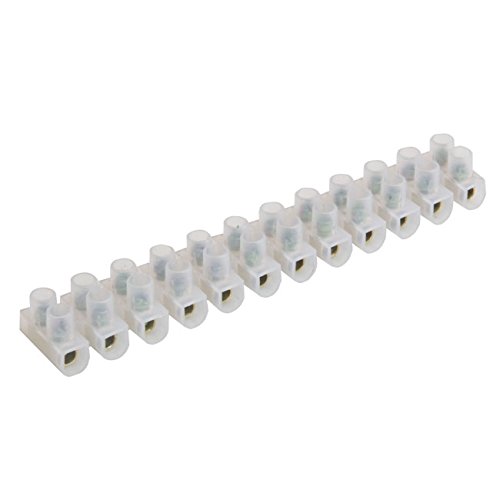Quite a few years ago I purchased a combo Korber roundhouse and Diamond Scale turntable 'set'.
The turntable pit was warped, and I had to construct a new one. I posted some details here,...
https://modelrailroadforums.com/forum/index.php?threads/build-your-own-turntable.32492/#post-481527
Then I turned my attention to the roundhouse which I sought to mount on its own metal base plate.
Roundhouse Base Piece
I've mentioned building a base plate for my roundhouse structure before, but was unsure of what material I wanted to use. I settled on a thin sheet of metal I had laying around, and that happened to be painted black. I sought out a thin material so my incoming tracks would be practically the same level as all the other tracks around the turntable.
I intend to mount the tracks and the roundhouse structure all on the same base plate, so it can be lifted off the layout as one piece in order to add additional interior details at a later date, and to get it out of the way while finishing off the via-duct bridge behind it, and the city scene structures and backdrop.
I figured that the thin metal base plate could be made a stiffer by gluing both the tracks and the floor material to the metal base plate. The floor inside there needs to be level with the tops of the rails. The easiest way I could think of achieving that was to use a combination of 2 different material,...one about the height of the ties up to the molded on rail retainers, then a final layer of thin styrene to meet up with the rail tops. I chose some scrap masonite I had to build the first layer of 'floor' . In these photos you can see the 'between the track' masonite flooring.


The masonite is also relatively stiff on its own, and becomes more-so with fully glued to the base plate. Interestingly I discovered that PVC cement worked extremely well with gluing the masonite to the scratched up metal plate.
I then proceeded to glue up the wall structures of the roundhouse itself. For these operations I used a 5 minute epoxy as I worked my way around the perimeter section by section. The walls are joined to each other, but more importantly the are bonded to both the metal base plate AND the 1/8” tall edges of the masonite floor pieces.



BTW, I cut the metal base plate with a little extra oversize lip that helps with grabbing and lifting out.
The turntable pit was warped, and I had to construct a new one. I posted some details here,...
https://modelrailroadforums.com/forum/index.php?threads/build-your-own-turntable.32492/#post-481527
Then I turned my attention to the roundhouse which I sought to mount on its own metal base plate.
Roundhouse Base Piece
I've mentioned building a base plate for my roundhouse structure before, but was unsure of what material I wanted to use. I settled on a thin sheet of metal I had laying around, and that happened to be painted black. I sought out a thin material so my incoming tracks would be practically the same level as all the other tracks around the turntable.
I intend to mount the tracks and the roundhouse structure all on the same base plate, so it can be lifted off the layout as one piece in order to add additional interior details at a later date, and to get it out of the way while finishing off the via-duct bridge behind it, and the city scene structures and backdrop.
I figured that the thin metal base plate could be made a stiffer by gluing both the tracks and the floor material to the metal base plate. The floor inside there needs to be level with the tops of the rails. The easiest way I could think of achieving that was to use a combination of 2 different material,...one about the height of the ties up to the molded on rail retainers, then a final layer of thin styrene to meet up with the rail tops. I chose some scrap masonite I had to build the first layer of 'floor' . In these photos you can see the 'between the track' masonite flooring.
The masonite is also relatively stiff on its own, and becomes more-so with fully glued to the base plate. Interestingly I discovered that PVC cement worked extremely well with gluing the masonite to the scratched up metal plate.
I then proceeded to glue up the wall structures of the roundhouse itself. For these operations I used a 5 minute epoxy as I worked my way around the perimeter section by section. The walls are joined to each other, but more importantly the are bonded to both the metal base plate AND the 1/8” tall edges of the masonite floor pieces.
BTW, I cut the metal base plate with a little extra oversize lip that helps with grabbing and lifting out.

